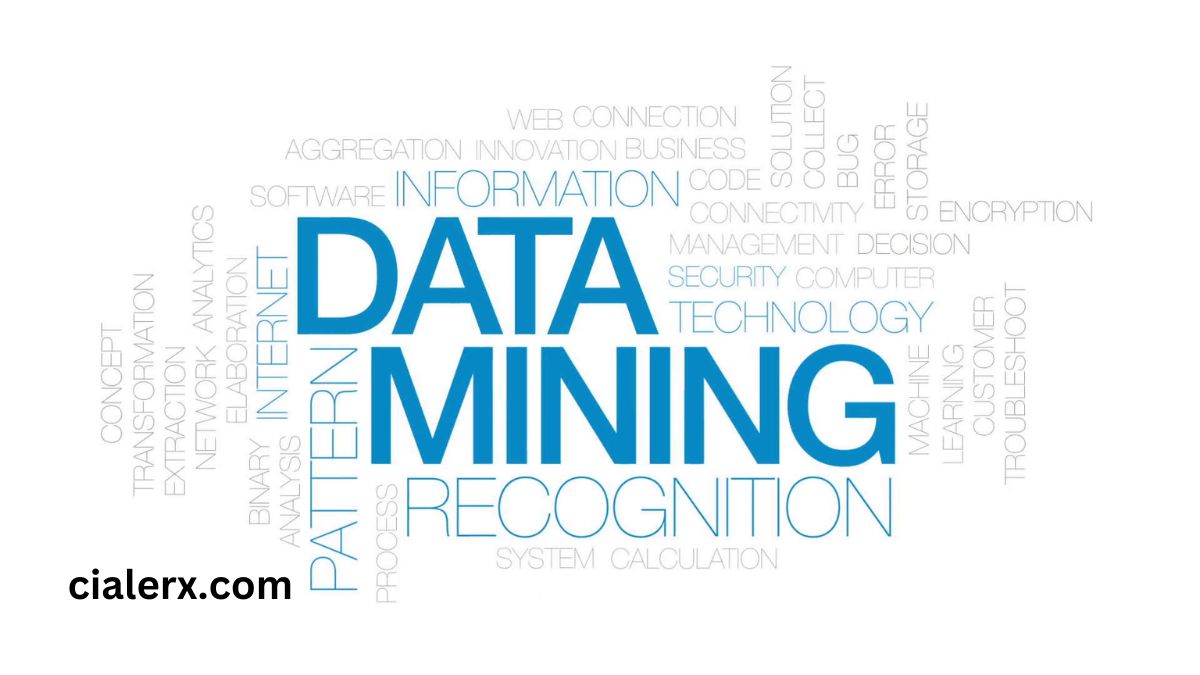MARKETING
Marketing in Business: Strategies and Types Explained

Success in today’s cutthroat corporate environment depends on efficient marketing. Understanding the different forms and tactics of marketing can have a big impact on the growth and sustainability of your company, regardless of your level of experience as a corporate executive or as a start-up entrepreneur. By demystifying marketing strategies, this guide will assist you in customizing them to your company’s requirements.
Understanding Marketing Strategies
Marketing strategies are detailed plans created to use advertising efforts to achieve particular
objectives. These tactics fall into a number of general categories, each with a distinct methodology and area of focus:
1. Product Marketing
Focus: Highlighting the features and benefits of a product.
Selling and promoting a product to a particular target market is known as product marketing. Its main goals are to comprehend consumer wants and provide valuable products. Product creation, market research, and writing effective product descriptions are important tasks.
2. Content Marketing
Focus: Providing valuable information to attract and retain customers.
The goal of content marketing is to draw in and keep a target audience interested by producing and disseminating worthwhile, pertinent information. The goal is to drive profitable customer action by establishing authority and building trust through blogs, videos, infographics, and social media posts.
3. Social Media Marketing
Focus: Leveraging social media platforms to connect with audiences.
Social media marketing promotes goods and services through sites like Facebook, Instagram, LinkedIn, and Twitter. In order to foster a community around your business and increase consumer loyalty and brand awareness, it’s not just about producing interesting content.
4. Email Marketing
Focus: Direct communication with potential and existing customers.
Sending customized messages to people who have agreed to receive emails from your company is known as email marketing. It works well for sharing news, offering promotions, nurturing leads, and keeping your audience interested over time.
5. Search Engine Optimization (SEO)
Focus: Increasing visibility in search engine results.
The goal of SEO is to raise a website’s position on search engines such as Google. It includes optimizing content with relevant keywords, improving site structure, and earning backlinks. The goal is to increase organic traffic and enhance online visibility.
6. Influencer Marketing
Focus: Partnering with influencers to expand reach.
Working with people who have a sizable following and sway over potential clients is known as influencer marketing. Influencers are hired by brands to advocate their goods in a genuine way, using the influencer’s following to expand their audience.
7. Pay-Per-Click Advertising (PPC)
Focus: Driving traffic through paid ads.
PPC is a type of online advertising in which marketers are charged a fee each time a click is made on one of their adverts. It’s a method of purchasing website traffic instead of obtaining it naturally. Businesses can bid for ad placement in search engine sponsored links using platforms such as Google Ads.
Selecting the Right Marketing Strategy
Choosing the right marketing strategy depends on several factors, including your business objectives, target market, budget, and resources. Here’s a simplified approach to help you decide:
- Define Your Goals: Clearly outline what you want to achieve with your marketing efforts, whether it’s brand awareness, lead generation, or sales growth.
- Understand Your Audience: Conduct thorough market research to understand your audience’s preferences, behaviors, and needs.
- Evaluate Your Resources: Consider the budget and tools available to implement your marketing strategies effectively.
- Analyze Competitors: Study what your competitors are doing and identify opportunities to differentiate your brand.
- Test and Measure: Implement different strategies on a small scale, measure their effectiveness, and optimize based on results.
Final Thoughts
There is no one-size-fits-all approach to marketing. It necessitates a deliberate strategy catered to your audience and particular business objectives. You may develop a coherent strategy that promotes growth and builds a strong brand presence by comprehending the many forms of marketing and how they fit with your goals.
Keep in mind that marketing is a continual process that necessitates creativity, flexibility, and lifelong learning. Stay informed about trends and consumer preferences and be ready to pivot your strategies as needed to stay ahead in the marketplace.
FAQs
What is the most effective marketing strategy for small businesses?
The type of business and the target market frequently determine the best marketing plan for small enterprises. Nonetheless, a lot of small businesses succeed with content marketing since it provides affordable means of establishing authority and engaging audiences. Using social media platforms can also assist build a community around the brand and raise brand awareness.
How can I measure the success of my marketing efforts?
Key performance measures including website traffic, lead generation, conversion rates, and client retention rates can be used to gauge success. You may learn more about how your audience engages with your content and which tactics are working by using analytics tools like Google Analytics.
How important is SEO for my business?
SEO is essential for boosting your website’s organic traffic and online visibility. Potential clients may find your company more easily if your website is optimized to rank higher in search engine results. Putting money into SEO can increase your competitive edge and result in long-term success.
Should I focus on multiple marketing strategies simultaneously?
Although having a varied marketing strategy is crucial, it may be wiser to begin with a few core tactics that closely match your target market and business objectives. You can then develop and incorporate more methods to help business growth as you start to see results and collect data.
Can influencer marketing work for any business?
Many firms, especially those in consumer-driven industries, might benefit from influencer marketing. Working with influencers that can accurately represent your business and whose followers closely resemble your target audience is crucial. Micro-influencers can frequently increase engagement and conversions for niche markets.

MARKETING
SEO Secrets for Trailers: Boosting Visibility and Attracting Viewers Online

In today’s digital landscape, where attention spans are fleeting and competition is fierce, getting your trailer noticed can feel like an uphill battle. Whether you’re promoting a film, series, or video game, the right search engine optimization (SEO) strategies can make all the difference. Harnessing SEO secrets for trailers not only boosts visibility but also attracts viewers who are eager to engage with your content.
Imagine having a visually stunning trailer that captivates audiences but struggles to find its way onto their screens. This is where SEO comes in—a powerful tool that transforms great visuals into discoverable gems on various platforms. The world of online streaming and social media demands more than just captivating content; it requires smart strategies that help you stand out from the crowd.
Join us as we delve into effective techniques and insights designed to elevate your trailer’s presence and connect you with eager viewers looking for their next obsession. Unlock the potential of SEO secrets for trailers today!
The Importance of SEO for Trailers
The digital landscape is crowded. With countless SEO secrets for trailers vying for attention, SEO becomes essential. It helps your trailer stand out from the competition.
Effective SEO strategies increase visibility across search engines and platforms like YouTube. This means more potential viewers see your content.
An optimized trailer can attract a targeted audience genuinely interested in what you offer. When done right, it generates buzz even before the release date.
Moreover, good SEO practices enhance viewer engagement. Higher click-through rates lead to better rankings—creating a cycle of exposure and interest that benefits your project immensely.
Implementing strong SEO tactics can mean the difference between being overlooked or going viral in an ocean of visual media.
Key Elements of an SEO-Friendly Trailer
Creating an SEO-friendly trailer involves several crucial elements. First, visuals play a key role. High-quality footage grabs attention and keeps viewers engaged.
Next, audio quality matters just as much. Clear sound enhances the overall experience and encourages shares.
Don’t forget about length. A concise trailer—typically under two minutes—can effectively convey essential information without losing interest.
Another vital aspect is your call-to-action (CTA). Encouraging viewers to visit your website or subscribe can drive traffic beyond the video itself.
Ensure that any text within the trailer complements the narrative seamlessly. Captivating titles and on-screen text can reinforce messages while supporting SEO efforts by embedding relevant keywords naturally throughout the content.
Optimizing Titles, Descriptions, and Tags
Crafting an engaging title is crucial. It’s the first impression that potential viewers get of your trailer. Aim for a blend of intrigue and clarity, ensuring it reflects the content effectively.
Descriptions provide context and entice viewers to click play. Use this space to highlight key themes or unique elements without revealing too much. Incorporate relevant keywords naturally but avoid keyword stuffing, which can deter audiences.
Tags serve as essential breadcrumbs leading users to your trailer. Choose tags that accurately represent your content while also tapping into trending topics in your genre. This boosts discoverability across various platforms.
Search engines use these components to rank your trailer among similar videos. Therefore, each element must work cohesively together to enhance visibility and draw in interested viewers eager for more content like yours.
Utilizing Keywords Effectively
Keywords are the backbone of effective SEO SEO secrets for trailers. Identifying relevant keywords can significantly impact your visibility online. Start by researching terms that resonate with your target audience.
Long-tail keywords often yield better results than broad, generic ones. They help narrow down searches, attracting viewers who are genuinely interested in what you offer. For instance, instead of just “action movie,” consider phrases like “upcoming action thriller 2024.”
Place these keywords strategically throughout your trailer’s title and description. However, avoid keyword stuffing; it can harm rather than help visibility. Aim for a natural flow that engages readers while incorporating key phrases seamlessly.
Monitor performance using analytics tools to see which keywords drive traffic effectively. Adjusting your strategy based on this data allows for continual improvement in reaching potential viewers hungry for fresh content related to your trailer’s theme or genre.
Link Building and Social Media Promotion
Link building is a crucial strategy for enhancing your trailer’s visibility. It involves acquiring backlinks from reputable sites that direct traffic to your content. Collaborating with film blogs, entertainment websites, or influencers can create valuable links.
Social media promotion amplifies this effect. Share your trailer across platforms like Instagram, Twitter, and Facebook to reach diverse audiences. Engaging visuals and compelling captions can captivate users scrolling through their feeds.
Encouraging shares increases organic reach significantly. Consider creating shareable graphics or behind-the-scenes content that fans will want to post on their profiles.
Utilizing hashtags also helps in discovering new viewers. Tailor them specifically for the genre of your trailer while mixing popular trends for broader exposure.
Engagement matters—responding to comments fosters community and encourages others to join the conversation about your project.
Other Tips and Tricks for Boosting Visibility
To stand out in the crowded online space, consider creating teaser clips. These short snippets can generate excitement and curiosity around your full trailer. Share them across various platforms to capture attention.
Engage with your audience by encouraging comments and feedback. Responding to viewers helps build a community around your content. This interaction not only fosters loyalty but also boosts visibility through increased engagement metrics.
Analyze performance data regularly. Understand what resonates with viewers and adjust strategies accordingly. Use insights from analytics tools to refine future SEO secrets for trailers.
Collaborate with influencers or bloggers who align with your project’s theme. Their endorsement can expose you to new audiences eager for fresh content.
Don’t overlook email marketing campaigns! Sending exclusive previews or behind-the-scenes looks can pique interest among subscribers, driving traffic back to your main trailer page.
Conclusion
To maximize the impact of your trailer, understanding and implementing effective SEO strategies is essential. The digital landscape is highly competitive, and without a strong online presence, even the most captivating SEO secrets for trailers can go unnoticed.
By focusing on key elements like titles, descriptions, and tags, you lay the groundwork for better search visibility. Utilizing keywords effectively ensures that potential viewers find your content when they are searching for related topics or genres.
Building links to your trailer from reputable sources enhances credibility while social media platforms offer an excellent way to promote your work organically. Engaging with communities interested in film or video content can further amplify reach.
Never underestimate the power of creative promotion tactics. Collaborate with influencers or consider cross-promotion with similar projects to expand your audience base. Applying these SEO secrets consistently will not only boost visibility but also attract more viewers to experience what you’ve created. Embrace these techniques and watch as interest in your SEO secrets for trailers grows significantly over time.
MARKETING
Unlocking Insights: Your Ultimate TSK Data Mining Cheatsheet

Data is everywhere. Every click, every transaction, and every interaction generates a wealth of information that holds the key to understanding trends, behaviors, and opportunities. Enter TSK data mining—a powerful method for extracting valuable insights from complex datasets. Whether you’re a business owner looking to boost your bottom line or a researcher chasing breakthroughs in your field, mastering this technique can be transformative.
But where do you start? With so many tools and methodologies out there, navigating the world of TSK data mining might seem daunting. That’s why we’ve created this ultimate cheatsheet just for you! This guide will demystify the process and equip you with practical steps to unlock insights like never before. Let’s dive into the essential strategies that can elevate your projects and drive meaningful outcomes!
The Importance of Data Mining in Business and Research
Data mining plays a pivotal role in today’s data-driven landscape. For businesses, it uncovers hidden patterns and trends that inform strategic decisions. Companies can optimize operations, enhance customer experiences, and drive revenue through actionable insights.
In research, data mining transforms raw information into valuable knowledge. It allows scholars to identify correlations and validate hypotheses faster than traditional methods.
The ability to analyze large datasets opens new doors for innovation. Organizations can tailor their products or services to meet specific needs identified through data analysis.
Moreover, effective data mining promotes predictive analytics. This foresight empowers companies and researchers alike to anticipate market shifts or emerging trends before they occur.
Understanding the importance of this process is essential for anyone looking to leverage vast amounts of information effectively. The potential benefits are immense when harnessed correctly.
Steps to Conducting Successful TSK Data Mining
The journey of successful TSK data mining begins with defining your objectives. Knowing what you want to achieve shapes the entire process.
Next, gather relevant data from various sources. Ensure that this data is clean and organized. Quality input leads to quality insights.
Once your dataset is ready, explore it thoroughly. Understand patterns and anomalies within the information. This exploration phase reveals hidden gems that can drive decision-making.
After analysis, it’s essential to apply appropriate algorithms tailored for your goals. Choose methods that align with the nature of your questions or hypotheses.
Interpret the results clearly and effectively communicate them to stakeholders. Visualization tools can help present complex findings in an understandable way, making it easier for others to grasp key takeaways without getting lost in numbers.
Common Tools and Techniques used in TSK Data Mining
When diving into TSK data mining, having the right tools makes all the difference. Popular software options include R and Python, both of which offer extensive libraries for various data analysis needs.
R provides packages like ‘caret’ and ‘dplyr,’ making it easier to manipulate datasets. Python users often turn to libraries such as Pandas and Scikit-learn for efficient processing.
Techniques play a crucial role as well. Decision trees are commonly employed due to their intuitive visual representation of decision-making paths. Fuzzy logic techniques add another layer by handling uncertainty in data analysis.
Clustering algorithms, such as K-means or hierarchical clustering, help identify patterns within large datasets. Each tool and technique has its unique strengths that can be leveraged based on specific project requirements or goals.
Best Practices for Maximizing Results from TSK Data Mining
To maximize results from TSK data mining, start with a clear objective. Knowing what you want to achieve helps streamline your approach and focus your analysis.
Quality data is crucial. Ensure that the information you’re working with is accurate and relevant. Cleaning your dataset can save time in the long run by eliminating noise.
Leverage visualization tools to make sense of complex data patterns. Charts and graphs can reveal insights that raw numbers often conceal, making it easier for stakeholders to understand findings.
Collaboration enhances creativity. Engage team members from different departments who can bring unique perspectives on interpreting data trends.
Iterate based on feedback. Continuously refine your methods as you gather new insights or discover unexpected results. This agility will lead to more meaningful outcomes over time.
Real-Life Examples of Successful TSK Data Mining Applications
Businesses across various industries have harnessed the power of TSK data mining to drive innovation and improve decision-making.
In healthcare, for instance, hospitals use TSK models to analyze patient records. This helps predict potential health risks and personalize treatment plans.
Retailers leverage TSK data mining to optimize inventory management. By understanding customer purchasing patterns, they can forecast demand more accurately.
Financial institutions utilize TSK techniques for fraud detection. Analyzing transaction data allows them to identify unusual activity in real-time.
Even in agriculture, farmers apply TSK methods to enhance crop yield predictions based on environmental factors like weather conditions and soil quality.
Conclusion: Harness the Power of TSK Data Mining for Your Business or Research Project
Harnessing the power of TSK data mining can transform your business strategies and research initiatives. By leveraging the insights derived from this technique, you gain a competitive edge in understanding market trends and consumer behavior.
The structured approach to TSK data mining allows for effective analysis of complex datasets, leading to informed decision-making. Whether you’re looking to enhance customer experiences or drive research outcomes, implementing these practices is essential.
Utilizing common tools and techniques effectively will maximize your results. Adopt best practices to ensure that your data mining efforts yield valuable insights. Real-life examples illustrate just how impactful TSK data mining can be across various domains.
Embrace the potential of TSK data mining today. It’s an opportunity waiting for those ready to innovate and explore new frontiers in their respective fields. Start integrating these methods into your projects now, and watch as they unlock unprecedented growth and insight.
MARKETING
Kickstart Your Career: What to Expect from a Digital Marketing Internship

Are you ready to dive into the dynamic world of digital marketing? If you’re looking for a way to kickstart your career, a digital marketing internship could be your gateway. This fast-paced field is constantly evolving, filled with opportunities that can help you build essential skills and make valuable connections. Whether you’re a college student or someone looking to switch careers, an internship in digital marketing can provide hands-on experience that textbooks simply can’t offer. Get ready to explore what this exciting journey entails and how it can shape your professional future!
The Benefits of a Digital Marketing Internship
A digital marketing internship opens doors to a world of opportunities. You gain hands-on experience that classroom learning simply can’t provide.
You’ll work with real campaigns, diving into SEO, social media management, and content creation. This practical exposure helps you understand the nuances of the industry.
Networking is another significant benefit. You’ll connect with professionals who can guide your career path or even become potential employers in the future.
Furthermore, internships often lead to full-time job offers. Companies prefer hiring interns they’ve already trained and evaluated.
These experiences boost your resume immensely. They showcase your initiative and commitment to personal growth in a competitive field like digital marketing.
Skills and Knowledge Gained from a Digital Marketing Internship
A digital marketing internship offers a treasure trove of skills and knowledge. Interns dive deep into SEO techniques, learning how to optimize content for search engines effectively. Understanding keywords, meta tags, and backlinks becomes second nature.
Social media management is another vital area. Interns discover the nuances of crafting engaging posts that resonate with audiences across platforms. They gain practical experience in creating campaigns that drive engagement.
Data analytics also plays a crucial role. Learning how to interpret metrics helps interns understand consumer behavior and campaign effectiveness. This analytical mindset is invaluable in today’s data-driven market.
Content creation skills flourish as well, whether it’s writing blog posts or designing visuals for ads. Each piece contributes to building a cohesive brand narrative.
Additionally, teamwork and communication are honed through collaboration with different departments. These soft skills complement technical expertise beautifully, preparing interns for future opportunities in the industry.
Responsibilities of a Digital Marketing Intern
As a digital marketing intern, your daily tasks can vary widely. You might start by assisting with content creation for blogs and social media platforms. Crafting engaging posts is essential to attract and retain an audience.
Monitoring online engagement is another key responsibility. You’ll analyze metrics from various campaigns, providing insights into what works best. This data helps shape future strategies.
Research plays a significant role as well. Interns often gather information about industry trends or competitor activities. Staying informed allows you to contribute valuable ideas during team discussions.
Additionally, you may help manage email marketing campaigns by drafting newsletters or segmenting lists for targeted outreach. Collaboration is crucial; you’ll work alongside other marketers on projects that require teamwork and brainstorming sessions.
Each task enhances your understanding of the digital landscape while building skills that are vital in this fast-paced environment.
Tips for Nailing Your Digital Marketing Internship
To excel in your digital marketing internship, start by setting clear goals. Knowing what you want to achieve will guide your efforts and keep you focused.
Stay organized. Use tools like Trello or Asana to manage tasks and deadlines efficiently. A structured approach helps avoid last-minute chaos.
Embrace feedback. Constructive criticism is invaluable for growth. Ask questions when unsure, and don’t hesitate to seek advice from experienced colleagues.
Network actively within the company. Building relationships can open doors for future opportunities or collaborations down the line.
Stay updated on industry trends. Subscribe to relevant blogs and podcasts that discuss new strategies and technologies in digital marketing. Being informed shows initiative and eagerness to learn more about the field.
Real-Life Experiences: Interviews with Former Digital Marketing Interns
Hearing from those who have walked the path can be enlightening. Former digital marketing interns share stories that resonate with many.
One intern, Sarah, highlighted her experience with social media campaigns. “I never knew creating content could be so impactful,” she said. She learned how to align posts with brand strategy while analyzing engagement metrics.
Then there’s Mark, who focused on SEO strategies during his internship. He emphasized the thrill of seeing a website’s traffic grow after implementing basic techniques he had mastered in school. “It was rewarding to contribute to real results,” he recalled.
Their experiences reflect varied aspects of digital marketing. Each story adds depth to what future interns can expect and achieve in this dynamic field. These insights not only inspire but also prepare new entrants for their own journeys ahead.
Conclusion
Embarking on a digital marketing internship can be a transformative experience. It opens doors to new opportunities and offers invaluable insights into the ever-evolving world of online marketing. With hands-on experience, you become adept at various tools, strategies, and trends that shape the industry.
The skills acquired during your internship will not only enhance your resume but also prepare you for future roles in digital marketing. You’ll learn about analytics, content creation, SEO practices, social media management, and much more. These competencies are essential in today’s job market.
As you step into this exciting phase of your career journey, remember to embrace every challenge as an opportunity for growth. Engage with mentors and colleagues alike; they can provide guidance that is crucial for development.
Your time as a digital marketing intern can set the stage for long-term success in this dynamic field. Approach it with enthusiasm and curiosity—your next big breakthrough might just be around the corner!
-

 HOME7 months ago
HOME7 months agoTarget Trends: What’s Hot in Stores Right Now?
-

 BUSINESS8 months ago
BUSINESS8 months agoCustomer Satisfaction: Definition and Importance
-

 HEALTH7 months ago
HEALTH7 months agoThe Truth About Vasectomies: Myths, Facts, and Everything In Between
-

 HOME2 months ago
HOME2 months ago300 Types of Flowers with Names from A to Z (and Pictures)
-

 ENTERTAINMENT7 months ago
ENTERTAINMENT7 months agoFrom Isolation to Community: Strategies for Connecting with Readers
-

 TECH6 months ago
TECH6 months agoThe Risks of Disconnecting Your AC Compressor: A Comprehensive Guide
-

 HEALTH7 months ago
HEALTH7 months agoRevitalize Your Waistline: 7 Delicious Flat Stomach Detox Water Recipes for Weight Loss
-

 BUSINESS7 months ago
BUSINESS7 months agoWhat is a Business Venture? With Examples + How to Start